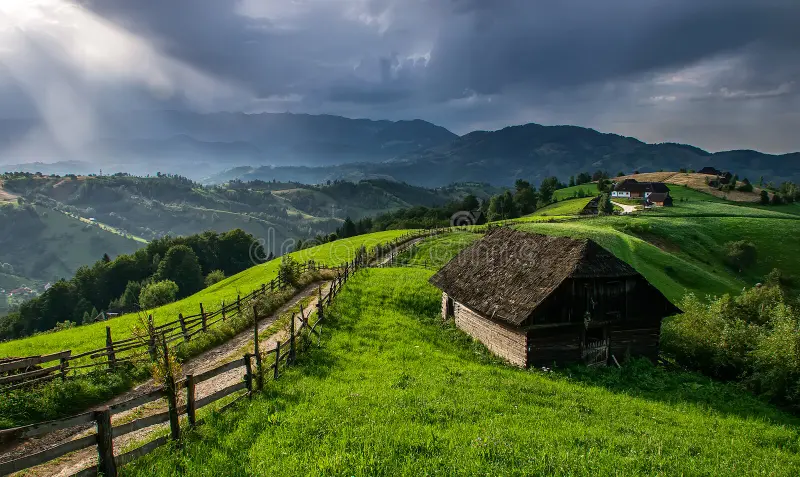In a world increasingly seeking unique and immersive travel experiences, the concept of “Icy Village” has transcended mere imagination to become a tangible, breathtaking reality. While the name “Icy Village” might conjure a single, unified destination, it truly represents a growing trend in high-latitude tourism, with pioneering destinations around the globe setting new benchmarks for winter luxury and adventure. From the frosty art installations of Japan’s Ice Village at Hoshino Resorts TOMAMU to the cultural immersion offered by Icy Strait Point in Alaska, these frozen havens are captivating millions and redefining what a winter getaway can be. This news article explores the rising popularity, innovative features, and sustainable practices that make these “Icy Villages” truly extraordinary.
The Phenomenon of Frozen Architecture More Than Just Ice
The cornerstone of any Icy Village is its extraordinary architecture, where ice and snow are not merely elements but the very building blocks of a fantastical realm. Unlike ephemeral snow sculptures, these structures are designed for durability and function, often housing hotels, bars, chapels, and even restaurants.
Take for instance, the Ice Village at Hoshino Resorts TOMAMU in Japan. Re-imagined each winter, it features an “Ice Chapel” for serene ceremonies, an “Ice Hotel” offering a truly unique overnight stay with specialized sleeping bags ensuring warmth, and an “Ice Bar” where drinks are served in ice glasses. The intricate carvings and artistic themes, refreshed annually, transform these spaces into living art galleries. Similarly, destinations like Iglu-Dorf in the Alps and Ice & Light Village in Sweden offer diverse options, from shared igloo accommodations to modern cabins enclosed by igloo-shaped shells, each designed to provide an unparalleled connection with the snowy surroundings.
The engineering marvel behind these structures is often overlooked. Architects and artisans work meticulously to harness the insulating properties of snow and ice, creating spaces that are surprisingly comfortable despite sub-zero external temperatures. This commitment to both aesthetics and functionality is what elevates “Icy Villages” from simple novelties to legitimate architectural wonders.
Beyond the Chill A Kaleidoscope of Winter Activities
The appeal of an Icy Village extends far beyond its icy structures. These destinations are carefully curated to offer a wide array of activities that cater to every type of winter enthusiast, from adrenaline junkies to those seeking tranquil contemplation.
Snow-based adventures are a given. Visitors can glide down exhilarating snow tubing hills, pirouette on ice skating rinks, or even enjoy an “Ice Disco” with twinkling lights and music. For those craving more traditional winter sports, many Icy Villages are strategically located near ski resorts, offering access to pristine slopes for skiing and snowboarding, as well as cross-country skiing and snowshoeing trails for a more serene exploration of the wilderness.
The true magic, however, lies in the unique Arctic and sub-Arctic experiences. Dog sledding, a thrilling dash across the snow pulled by enthusiastic huskies, remains a perennial favorite. Reindeer sleigh rides offer a gentler, more whimsical alternative, particularly enchanting for families. Snowmobile safaris provide an exciting way to cover vast expanses of snow-covered terrain, offering panoramic views.
For many, the ultimate draw is the chance to witness the Northern Lights (Aurora Borealis). Destinations within the auroral oval, like those in Lapland or Northern Canada, capitalize on this natural phenomenon, offering specialized tours, cozy viewing huts, and even aurora alarm services to ensure guests don’t miss a single shimmering moment. Stargazing, far from urban light pollution, also becomes an exceptionally clear and mesmerizing activity.
Culinary Warmth in a Frozen Setting
The dining experience in an Icy Village is a deliberate contrast to the cold exterior, focusing on hearty, warming, and often locally inspired cuisine. Restaurants often feature cozy interiors with roaring fireplaces, creating an inviting ambiance.
Traditional local fare, emphasizing game meats, root vegetables, and berries, forms the backbone of many menus. Think rich stews, smoked fish, and comforting soups designed to replenish energy after a day in the cold. The innovation extends to the dining spaces themselves, with “Ice Restaurants” and “Ice Bars” offering a novel experience where even the serving dishes or bar counters might be made of ice. For example, Japan’s Ice Village features an “Ice Ramen Shop” where ramen is served in cold, sherbet-like kelp broth in ice bowls, offering a surprisingly refreshing yet warming sensation. Hot beverages, from mulled wine and hot chocolate to specialty coffees and teas, are readily available, providing instant comfort and warmth.
Sustainability A Crucial Commitment to Preservation
The increasing popularity of Icy Villages brings with it a significant responsibility: preserving the delicate natural environments in which they operate. Leading Icy Village destinations are integrating robust sustainability practices into their core operations.
This commitment spans several areas:
- Eco-Friendly Construction: Using local, renewable resources like snow and ice for structures, which naturally melt back into the environment. When permanent structures are built, sustainable materials and energy-efficient designs are prioritized.
- Waste Management: Implementing comprehensive recycling and waste reduction programs to minimize environmental impact.
- Energy Efficiency: Investing in renewable energy sources such as hydropower, geothermal, or solar panels (where feasible in winter conditions) to power facilities and reduce carbon footprint.
- Responsible Tourism Guidelines: Educating visitors on how to minimize their impact on the fragile ecosystem, encouraging adherence to designated trails, and promoting respectful interactions with wildlife.
- Supporting Local Economies: Prioritizing local employment, sourcing ingredients and crafts from nearby communities, and fostering cultural exchange with indigenous populations (such as the Sami people in Scandinavia or Tlingit in Alaska’s Icy Strait Point).
The balance between providing an extraordinary visitor experience and protecting these pristine winter landscapes is a continuous effort, with many “Icy Villages” setting benchmarks for eco-conscious tourism.
The Broader Impact and Future Outlook
The success of Icy Village destinations reflects a broader trend in global tourism towards experiential travel. Travelers are increasingly seeking authentic, immersive, and visually stunning experiences that go beyond conventional sightseeing.
Beyond direct tourism revenue, these villages often serve as catalysts for regional development, creating employment opportunities in remote areas and promoting local culture and traditions to an international audience. They also drive innovation in cold-weather construction and sustainable tourism practices, potentially inspiring other destinations.
Looking ahead, the “Icy Village” concept is likely to continue its evolution. We might see:
- Year-Round Ice Art: Advancements in refrigeration and construction technology could allow for permanent or semi-permanent ice installations, extending the season beyond natural winter.
- Enhanced Digital Integration: Augmented reality experiences, interactive exhibits, and personalized digital guides could further enrich the visitor journey.
- Greater Focus on Wellness: Incorporating elements like cold-water therapy, snow yoga, and specialized wellness retreats aligned with the refreshing winter environment.
- Expansion into New Regions: As climate change shifts weather patterns, new regions might emerge as viable locations for such developments, while existing ones might focus more intensely on mitigation strategies.
In conclusion, “Icy Village” is not just a place, but a captivating vision realized. From the architectural marvels of frozen structures to the thrill of Arctic adventures and the warmth of unique culinary delights, these destinations offer a profound escape into a world of winter magic. As they continue to innovate and commit to sustainability, “Icy Villages” are carving out a permanent, enchanting niche in the global tourism landscape, inviting travelers to embrace the chill and discover the unparalleled beauty of a snow-kissed dream.






